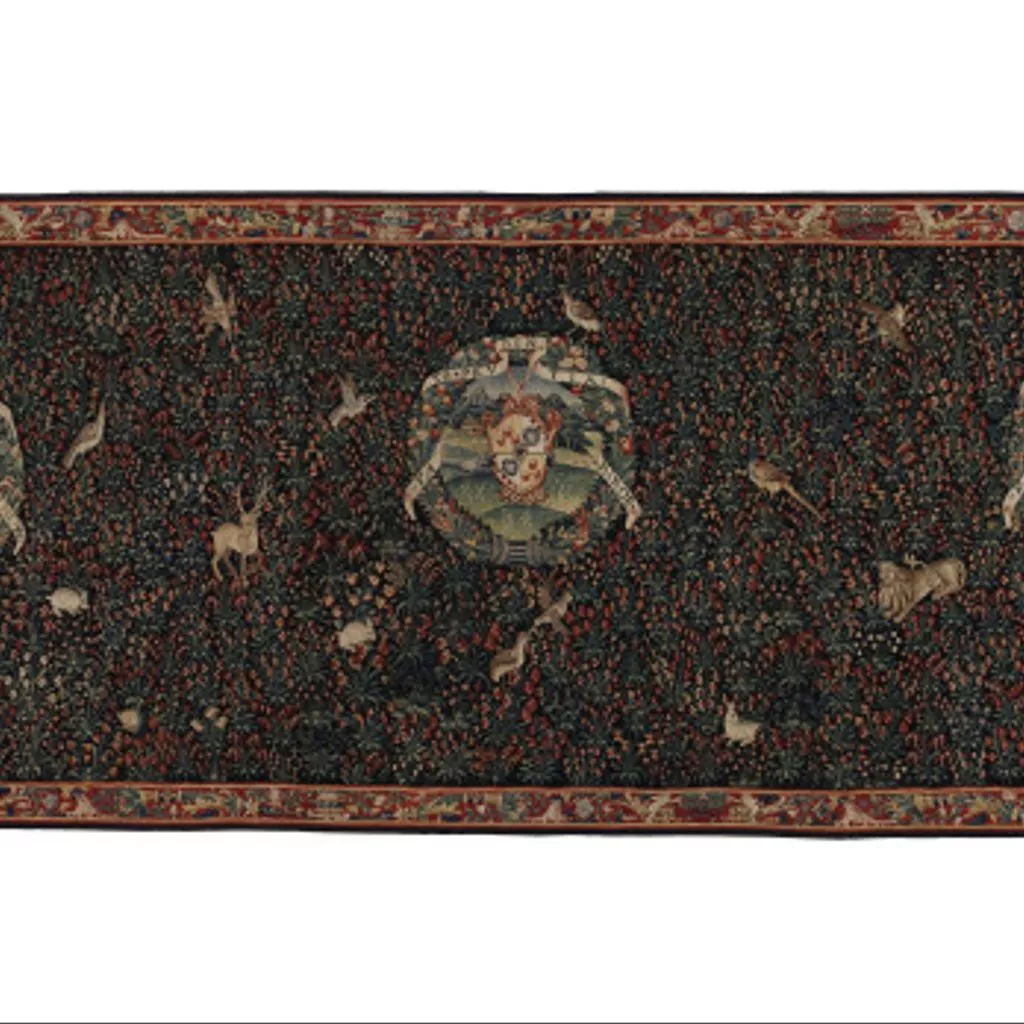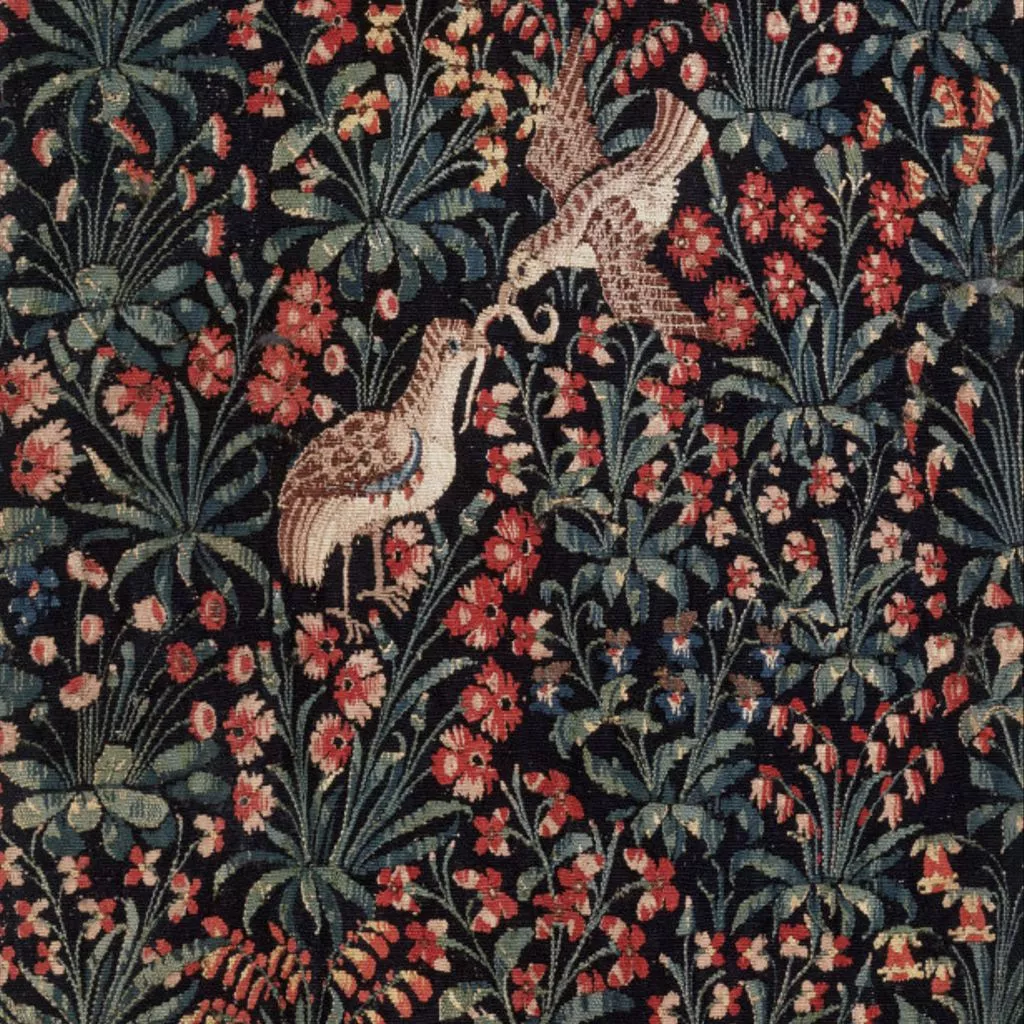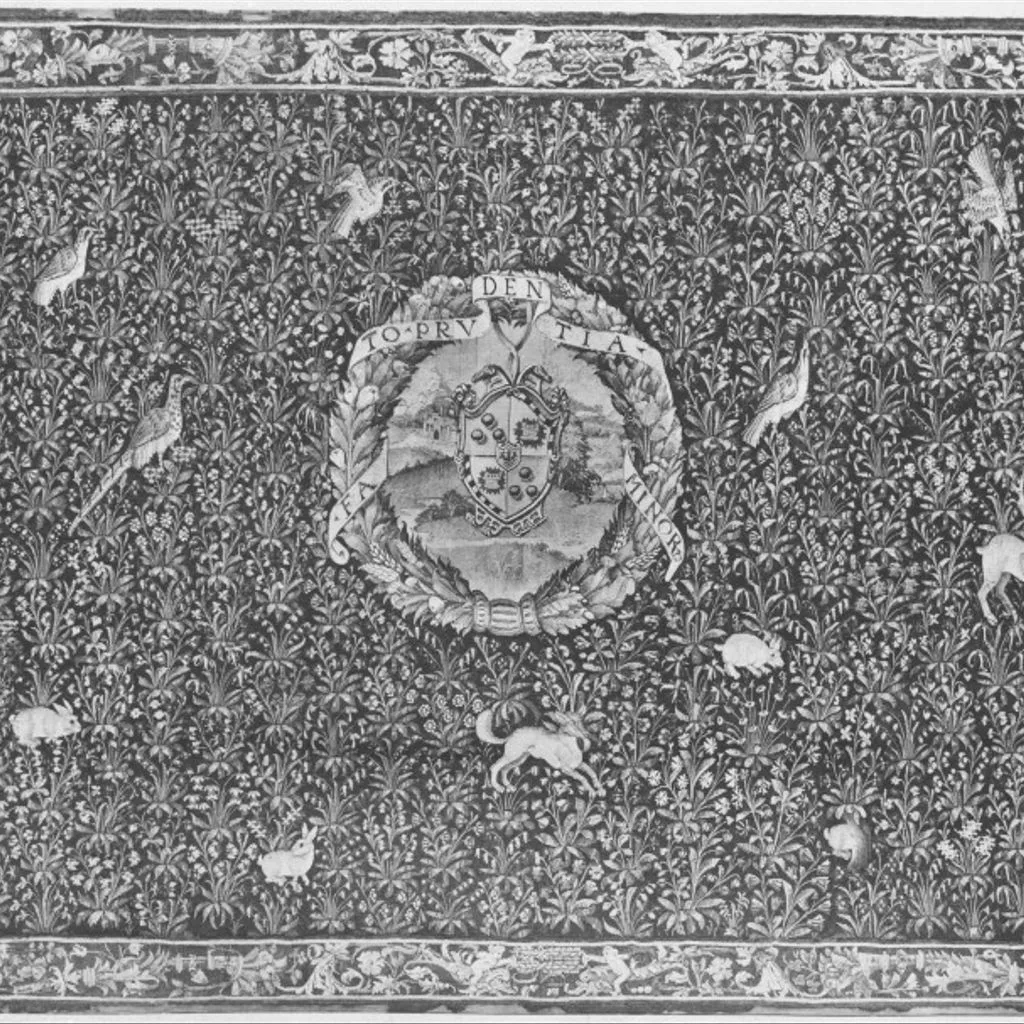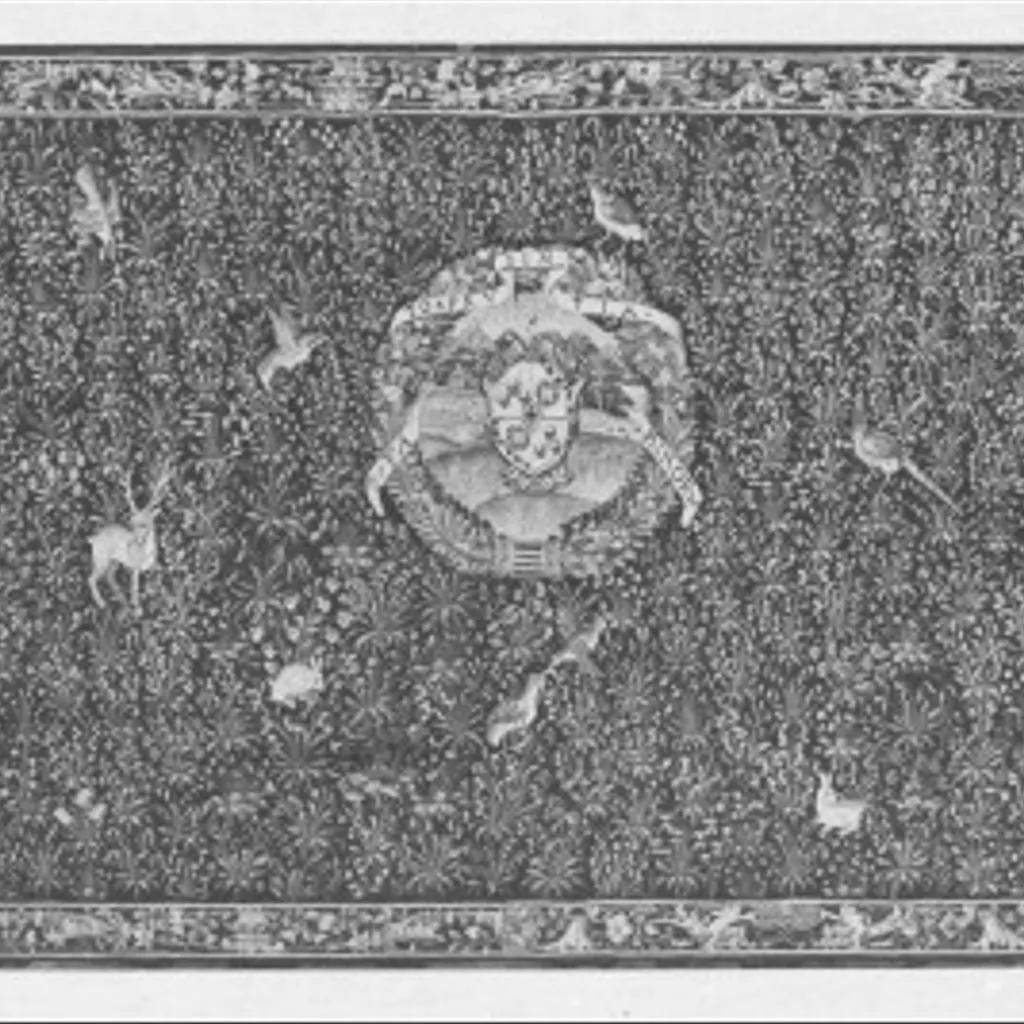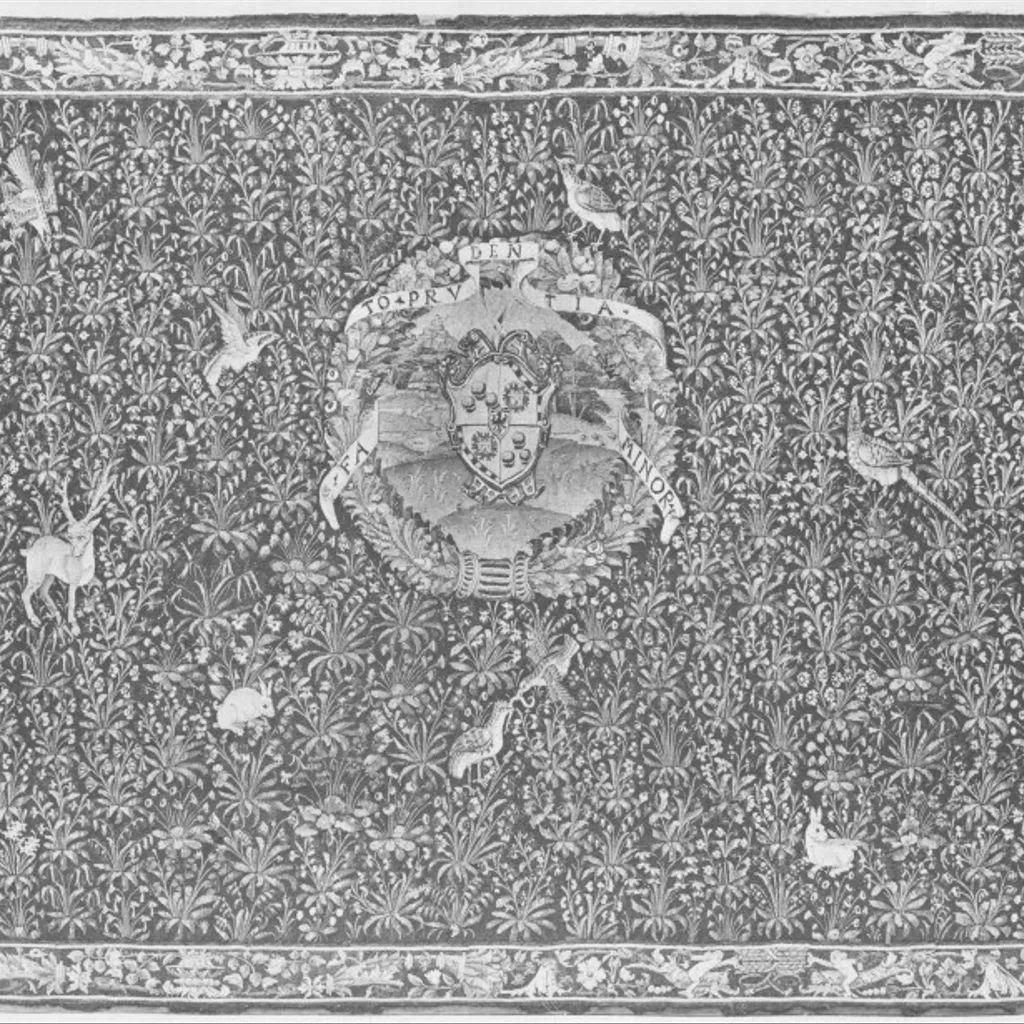Description
This long tapestry with three medallions surrounded with garlands bears the arms and motto of Giovio of Como on a mille-fleurs ground, enlivened with a variety of birds and animals. It is the finest example of its kind known. It was presumably intended to hang above wainscotting. Paolo Giovio was bishop of Nocera, but his motto 'fato prudentia minor' (wisdom is weaker than faith) is more Humanist than Christian.
Tapestry woven in coloured wools and silks, covered with small flowering plants of many kinds on a dark blue ground. Amidst these are animals and birds, including a lion, a stag, rabbits and pheasants. Three circular medallions are disposed across the middle of the tapestry; each consists of a wreath of fruit, flowers and foliage enclosing a landscape (perhaps depicting the country round Lake Como). From the top of the wreath a shield of arms is suspended in front of the landscape and a scroll entwining the wreath bears a motto. The shield and motto are those of the Giovio family of Como. The borders display arms and armour, cornucopias, boys riding on grotesque dolpins, flowers and leaves.
This tapestry was presumably intended to hang above wainscotting. The pair to it belongs to Prince Liechtenstein at Schloss Vaduz. The arms of Giovio, of Como, were first borne in the generation of the family represented by the famous historian, dilettante and collector, Paolo Giovio (1483-1552) and his brother Benedetto (d. 1545). Paolo received from Pope Leo X a Knighthood and the Professorship of Rhetoric at the Roman University, and granted him, as augmentation to his arms, the Medici insignia as borne in quarters 1 -4. In 1528 another Medici Pope, Clement VII, elected Paolo Giovio to the See of Nocera dei Pagani (Naples).
Tapestry showing the arms of the Family of Giovio; woven in coloured wools; Belgium (Flanders); 16th century.









